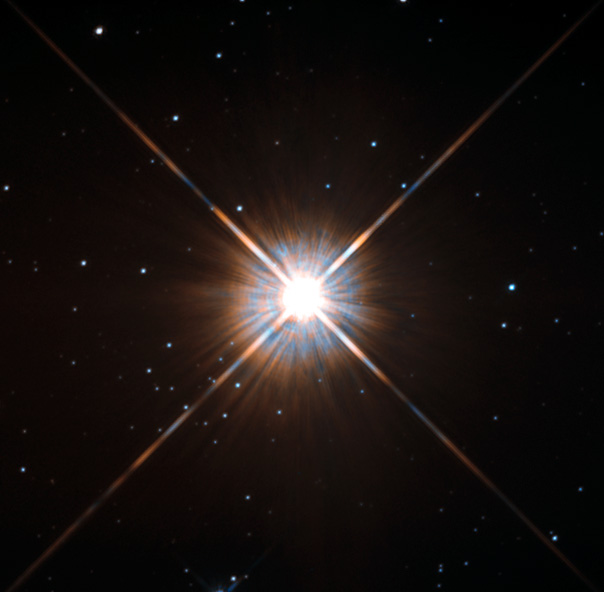Empyrean Time
ω
Wrote Faulkner, ‘The past is never dead.
It’s not even past.’ Those words he said
reverberate through all space and time
from dawn of our days to midnight’s chime.
‘We labor in webs spun long before
our human birth on this earthly shore,
heredity’s web that’s with us yet,
then too an environmental net,
‘those woven of consequence, desire,
the webs of our history entire,
and further,’ so Faulkner’s passage ends,
‘to web of eternity extends.’
Within the enduring first two lines
I’ve cited, he in effect defines
the view of the cosmos we discern
as present, although we’ve come to learn
that what appears as current to us
in fact has happened earlier, thus
regarding perception of a ‘when’,
the things we are seeing now were ‘then’.
While light-years measure distance away
the factor of time’s brought into play
that’s due to a traveling delay
for light its radiance to convey.
For instance, our nearest neighbor star
about four light-years from where we are,
is Proxima Centauri, a part
perhaps of triple form stellar art,
quite small with respect to astral size
therefore not spotted in darkened skies
albeit we see it through the eye
of Hubble scope, illumined on high.
Still what we’re beholding is the light
from four years back in that gleaming sight,
and in the case of the sun’s bright glow
we view it from eight minutes ago.
This concept holds for stars distant too;
indeed we can peer at quite a slew
from millions or even billions of
years past overhead in vast above
as if through a mystic time machine
were fused a vision of cosmic scene
embracing past and present as one
in glimpses ere our world was begun
far, far beyond the remotest yore
to erstwhile eras of nevermore,
a flight of fancy that comes to pass
as phantasmagoric looking glass.
Thus present and past may interlock
without the torment of future shock,
an oversimplified version, true,
of how astronomers time construe,
for then to make matters more complex
there’s ‘time dilation’ and its effects
since all is in motion out in space
yet so are we at differing pace.
But I shan’t try to approach that theme
which lies in relativity’s scheme;
instead on the muses I would draw
to stir a stargazing dreamer’s awe.
Wherever we look, to merely glance
at mirror image of self perchance,
is witnessed in duration gone by
through visible rays, so we descry
creation’s wonders within our ken
unfathomed as odes from poet’s pen
which evanescence can disavow
and hence for concomitance allow.
This sphere empyrean where we dwell
has timeless tides that recede and swell,
yet lest we forget the why or how,
the question remains just what is ‘now’?
~ Harley White
* * * * * * * * * *
Some sources of inspiration were the following…
“The past is never dead. It’s not even past. All of us labor in webs spun long before we were born, webs of heredity and environment, of desire and consequence, of history and eternity.”
~ William Faulkner, Requiem for a Nun
Article with image ~ Shining brightly in this Hubble image is our closest stellar neighbor: Proxima Centauri.Pantoum.
Inspiration also derived from the teachings and writings of Nichiren Daishōnin…
The reason that we continually recite Nam Myōhō Renge Kyō
“…we live all space, all time, simultaneously and without effort.”
~ Martin Bradley, from “Essays on the Buddha Teaching”
Image explanation ~ Proxima Centauri lies in the constellation of Centaurus (The Centaur), just over four light-years from Earth. Although it looks bright through the eye of Hubble, as you might expect from the nearest star to the Solar System, Proxima Centauri is not visible to the naked eye. Its average luminosity is very low, and it is quite small compared to other stars, at only about an eighth of the mass of the Sun… A light-year is the distance light travels in one year. Since it is about 4 light-years away, its light takes about 4 years to get to the Earth…

Credit: ESA/Hubble & NASA
| Table of Contents |
|